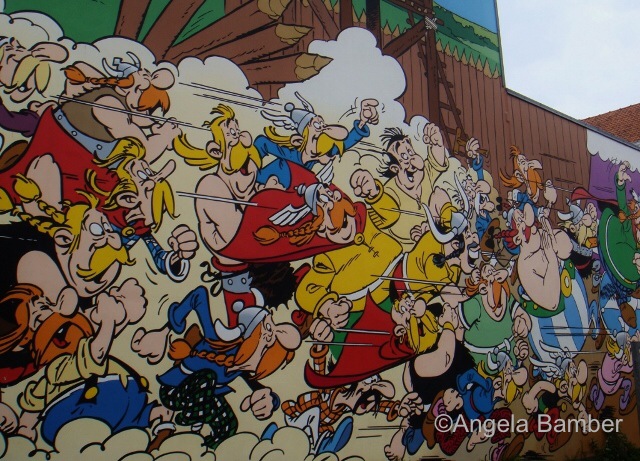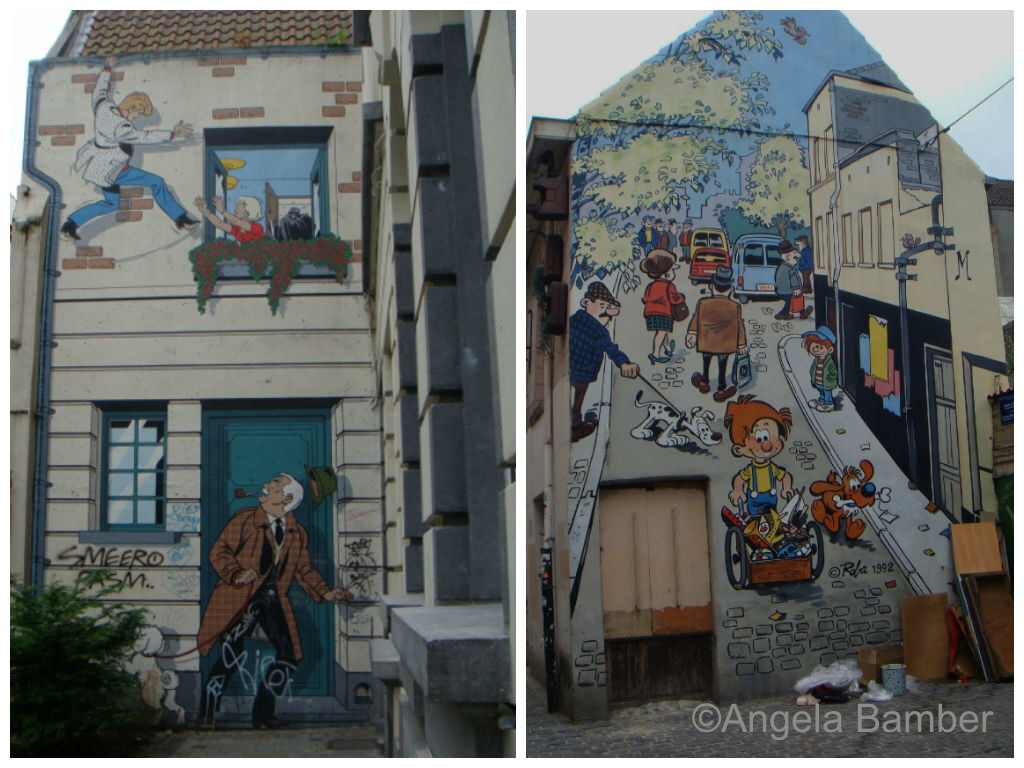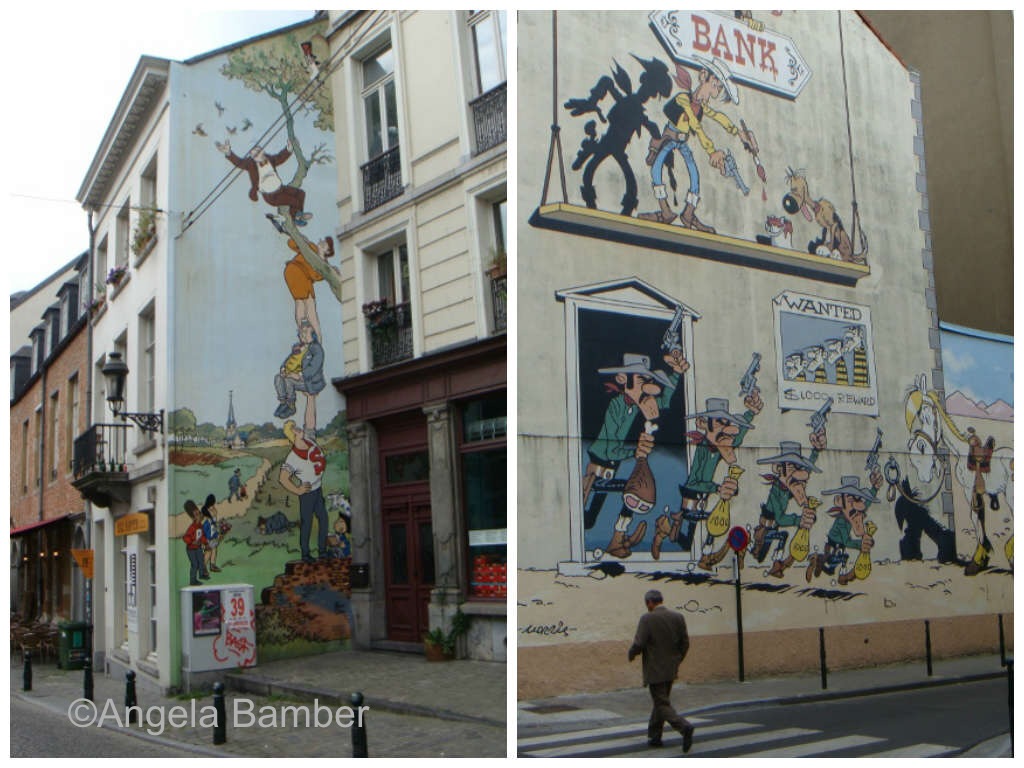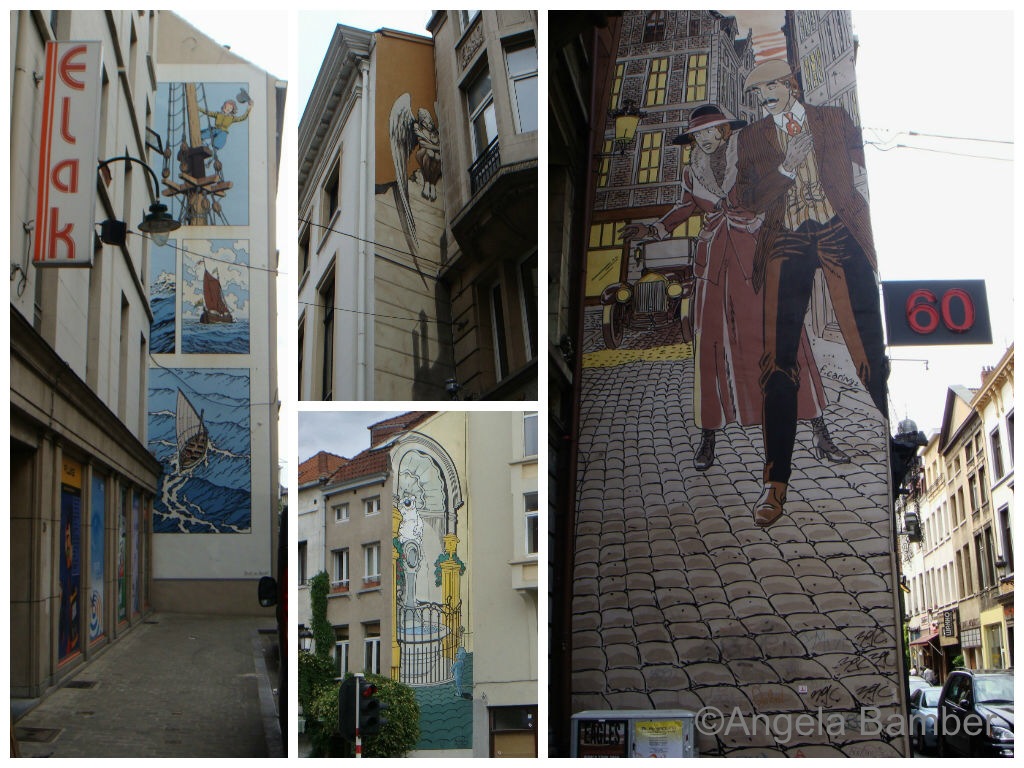For over 20 years, Brussels has created a trail of fifty larger than life comic strip murals. This unique street art celebrates the home-grown stars of European comics: Tintin, Asterix, the Smurfs, Lucky Luke, Nero, Blake and Mortimer, and the artists that brought them to life.
The country has a long and proud association with the comic strip industry. It is here that the comic strip was transformed from a popular medium to an art form.
When the City launched the comic strip trail in 1991 it had a number of goals: to establish a 'Comic Strip Metropolis', to encourage tourists to visit the lesser known districts of the city, and to add colour and cheer to the neighbourhoods.
The ninth art
In Belgium, the comic strip is recognised as a serious art form. In the 1960's, Spirou comic magazine declared it the 'ninth art' (after architecture, sculpture, painting, music, poetry, dance, film, and television).
The names of Belgium's comic strip heroes include Tintin, Spirou and Fantasio, Blake and Mortimer, Nero, Lucky Luke and the Smurfs. These are the creations of artists Hergé, Willy Vandersteen, André Franquin, Edgar P. Jacobs, Marc Sleen, Morris and Peyo.
In a country divided on linguistic lines, with Dutch speaking Flanders and French speaking Wallonia (and the smaller German speaking east Cantons), comics were a great unifier; popular culture that could be enjoyed by everybody.
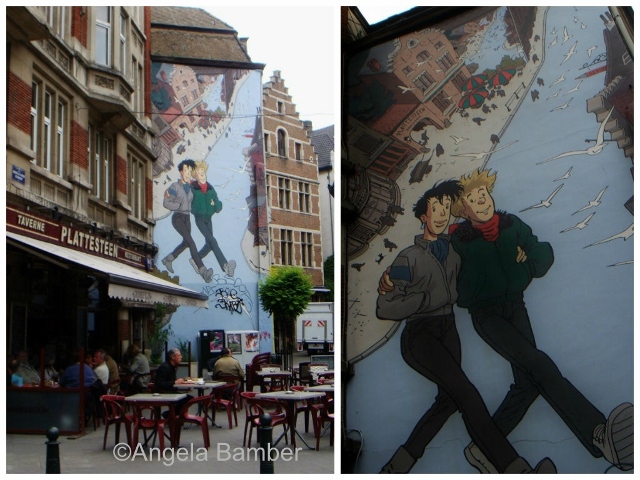
Franco-Belgian comics
The history of Belgium's comic book industry started in 1929, when Hergé (Georges Remi) drew the first Tintin comic strip. In those days there was no comic book culture, despite a few local success stories.
The popularity of Tintin and other subsequent comic strips created a large demand, which was met by Belgian comic strip magazines. Back then comics were not published in one complete volume but were published in episodes or gags every week or month in a small printed magazine.
The two main magazines were Spirou, launched in 1938 and Tintin launched in 1946. Although both magazines were published weekly, they were very different in terms of style and tone.
Spirou used a ‘caricatural’ cartoon or Marcinelle School style and had a fresh, comedic tone and Tintin used a realistic, clear line or ‘Ligne claire’ style and had a more serious tone.
Spirou’s stars were Spirou and Fantasio, The Smurfs, Tif Et Tondu, Lucky Luke, Buck Danny, Gaston Lagaffe, Marsupilami, Boule et Bill.
Tintin magazine's main stars were Tintin, Blake and Mortimer, Alix, Suske en Wiske, Chick Bill, Thorgal, Cubitus.
Both magazines were very popular and primarily published Belgian and French comics, which helped establish the term Franco-Belgian Comics.
Spirou, from it's inception, was published in both French and Dutch. The french version took Spirou as its title, after a Walloon term for 'squirrel' or colloquially a 'young tearaway' and the Flemish or Dutch version was called Robbedoes.
There was an unwritten rule that artists working on the magazines would be loyal to one and not work on the other. Likewise readers were usually loyal to just one magazine.
When World War 2 broke out there were challenges: staff went into exile, paper was in short supply, postal and delivery services were unreliable, and eventually magazine content would come under German censorship.
Despite the challenges, between the Summer of 1941 and Autumn of 1942 the weekly circulation of Spirou magazine nearly doubled from 85,000 to 152,000.
In 1943, the Germans insisted on assigning an 'administrator' to Spirou. The publishers refused. That Summer, the Germans ordered a publication stop on the magazine.
Spirou re-commenced business a short time after the Liberation.
The 1950's were the Golden Age for comic magazines in Belgium, with continued growth and expansion. Spirou expanded its magazine from 12 pages of newspaper quality to 52 full colour pages.
During the 1960's the dominance of Tintin and Spirou were challenged by newer, less restrictive, magazines. When Pilote (1959) was launched they attracted staff from Spirou, who on the whole continued working for both magazines. Asterix and Obelix were stars from Pilote.
Comic book historian Thierry Bellefroid says that by the 1970s, Belgian artists drew about 80 percent of all comics in Europe. This was largely due to the success of Tintin, which still sells over one million comic books a year worldwide.
Tintin was the industry leader between the 1920s and the 1970s, but by the 1980s, had become a victim of its own success.
"Tintin and other big Belgian comics couldn't reinvent themselves because they had developed a very clear, loyal fan base and they were also trapped in a very Catholic Belgium at the time. This is how Belgium got its market share eaten up, initially by new, edgier French comics," Bellefroid says.
In 1988, Tintin magazine ceased publication. A year later Pilote also shut up shop. In 2004, Media-Participations bought Dupuis Publications, the publishers of Spirou, as well as Dargaud and Le Lombard, the former publishers of Tintin. In 2005, Robbedoes also ceased publication.
Today, most of the Belgian publishing houses are owned by multinationals, with the industry controlled from Paris, London, or Tokyo.
Despite all of these challenges Spirou remains in circulation. In 2013, the magazine celebrated an incredible milestone - its 75th birthday!
Comic strip trail
The comic strip walk follows a trail of comic strip murals scattered around Brussels and Laeken. Earlier this month the 50th cartoon mural was unveiled in the Marollen District: it features Spirou, the bell boy.
Every year more murals are added.
The City of Brussels website lists the location of the murals with characters and authors or you can take an informal stroll with the following map.
The route begins near the famous Manneken Pis fountain, a small bronze sculpture of a naked boy urinating into a fountain, and the first image features Belgium's other famous son Tintin.

Other points of interest
At the Comics Cafe in the Place du Grand Sablon, there is a life-size bronze statue of Tintin, comic artwork and memorabilia.
At Louvain-La-Neuve, 20 miles south of Brussels, is the Hergé Museum. The concrete, glass and steel building, funded by Hergé's widow Fanny, takes its inspiration from an old ocean liner, in reference to some of Tintin's adventures to far-off places.
At Rue des Sables is the Centre for Comic Strip Arts. It is housed in a beautiful temple designed by Art Nouveau pioneer Victor Horta. It offers comparative exhibitions of comic-strip artists including Peyo, creator of the Smurfs, and Bob de Moor, Hergé's right-hand man.
The Comic Strip Festival (launched in 2010) is held in September every year and culminates with several sound and light shows in Parc de Royal and a Balloon's Day Parade through the centre of Brussels.
